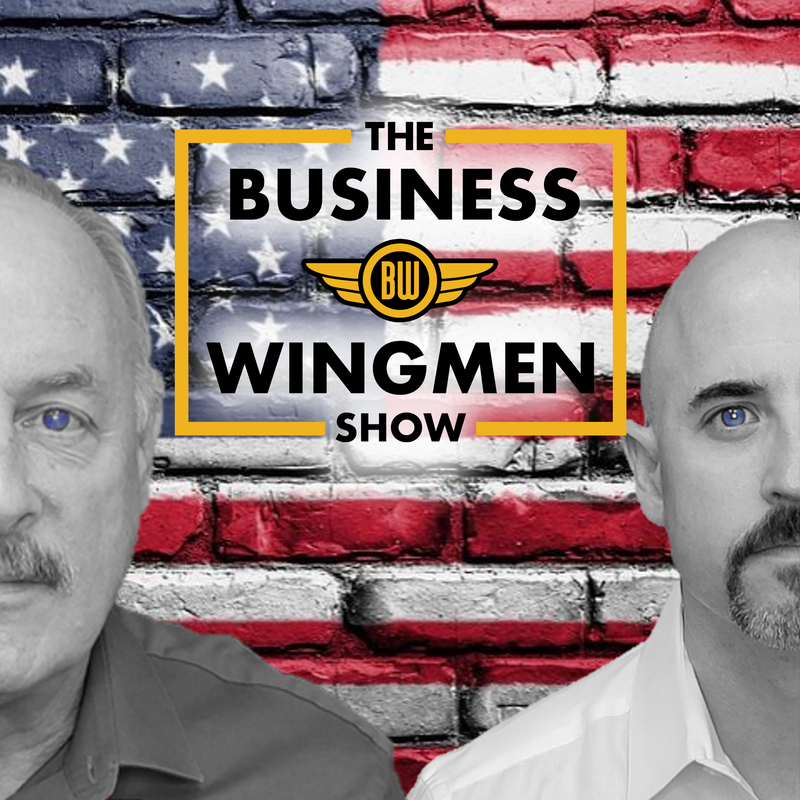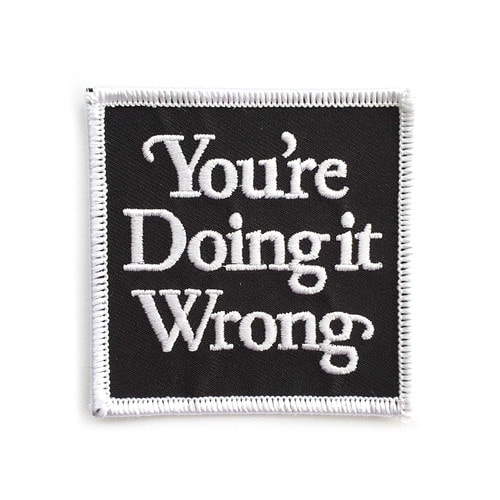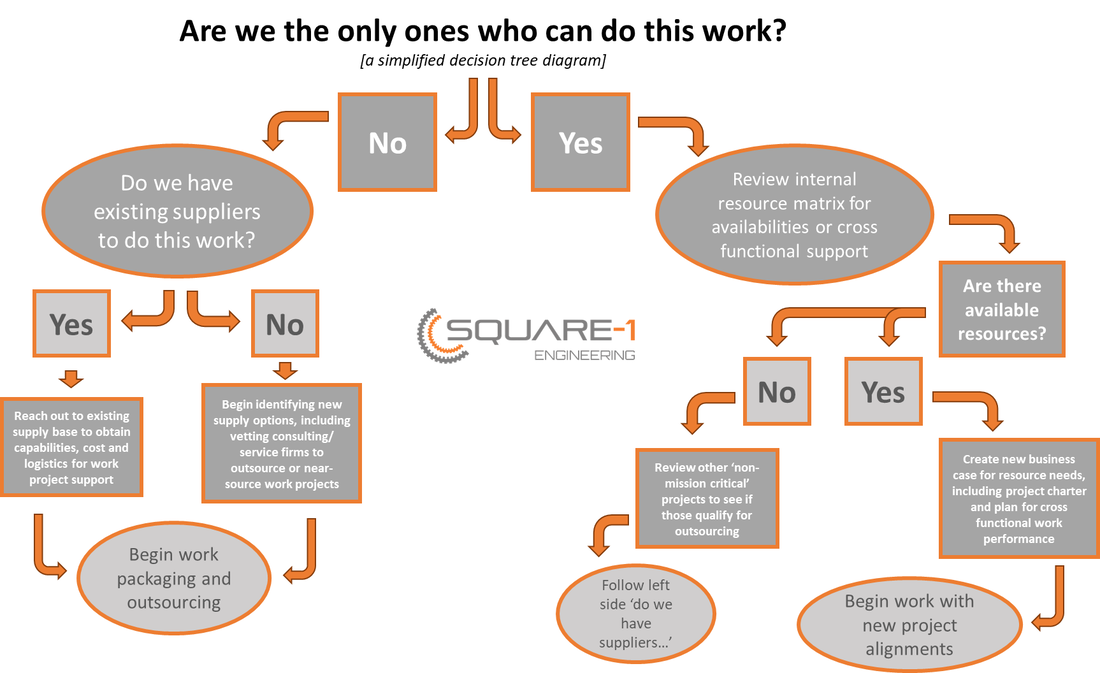Investing to Get Ahead at Work11/18/2022 Square-1's managing director Travis Smith is co-host of The Business Wingmen Show, a podcast covering business behaviors, strategies, leadership and much more. This week's episode...
EPISODE 89: Investing to Get Ahead at Work Making advancements in your career or your business means investing in yourself and the people with potential. But, how do you know it will pay off? Listen in as your Business Wingmen podcast co-hosts, Steve Smith & Travis Smith dissect why investing to get ahead at work makes sense, and just as important doing so proactively can change the game! Listen in to episode 89 here: https://www.spreaker.com/user/businesswingmen/089-investing-to-get-ahead-at-work?utm_campaign=episode-title&utm_medium=app&utm_source=widget
0 Comments
“They gave us world class, but all we needed was the basics.”
Last week I was speaking with a VP of Quality at a small medical device company at which point he politely complained to me about a recent experience he had with a consultant their company brought onboard. The company was implementing a new online quality management system (QMS) and was utilizing this consultant to get it up and running. The VP shared with me his irritation about how the consultant came in and took on the project as an expert in the field. The consultant had done many QMS implementations prior and came with good recommendations of his work. As the conversation went on the VP share further irritation about his experience working with the consultant. He brought in an expert to do a job that was rather straight forward yet that’s not what the company got in the end. Unfortunately, the consultant failed to understand one of the most important aspects of his job – understand the needs of the customer and implement accordingly. “We’re a small company, we don’t need all the bells and whistles right now [from a QMS system]. We just need a system that keeps us in compliance while making things easier from a process flow standpoint.” The VP was sharing with me a painful experience he was having as a result of someone doing work for him and not understanding what was actually needed in the moment to be successful on that project. Sometimes what’s needed is the basics, not world class. The key is knowing when each of these is appropriate. All to often we show up to a project or work with the idea we’re going to dress up the proverbial pig ready for a fancy night out on the town. This pig of ours is going to look amazing, amazing because of the work we did to get it there. However, we end up missing the mark because we don’t bother to ask the right questions along the way. If we had bothered to ask the right questions to understand what was truly needed by the company and the key stakeholders we may find out the ‘pig’ just needs a new pair of shoes, not a whole wardrobe change. Here’s how this played out in the scenario above with my client and VP…
Here’s the rub on the situation. If the consultant had bothered to ask the vital question of their client upfront “What does ‘success’ looks like at the end of the project?” he would have found out the client needed a practical QMS which met the basic needs of their product and regulatory requirements yet did not need a lot of the fancy bells and whistles larger companies utilize with their QMS. Basically, this small medical device company needed a QMS that was straightforward, basic yet allowed them to upgrade their company to meet the regulatory requirements for their product. The client wanted a no frills, basic system yet what they got was a world class system they’ll probably never fully utilize. Key Takeaway: Don’t assume your work or project requires you to put forth world class service. Sometimes ‘good enough’ is all that’s needed. Knowing the different between ‘good enough’ and world class work outputs is a vital skill to develop and implement in your career. Action Item: Before you begin your next project at work think to yourself “what’s really needed here? The basics or something more?”. Then actually go ask the key stakeholder in charge. Doing this shows an ability to think big picture with an appreciation for what’s best for the company, not what’s best to make you look good as a result of the work you can do. [This article is also featured on episode 72 of the Business Wingmen Podcast Show] Successful performance is everything! Our ability to execute at work is something we as professionals need to strive towards every day, yet many of our colleagues seem to have forgotten this time-tested reality of business. As Rory Vaden, bestselling business author and leadership speaker, accurately shares, “success is not owned, it is rented - and that rent is due everyday.” Vaden hits on a key piece which would serve all of us well to keep in mind as we come to work - our ability to successfully perform our job is what keeps us gainfully employed. I’ll take it a step further, what got us the job was our credentials, the things we’ve done in the past. What keeps us in the job thereafter is 100% our ability to get things done – the things that matter to the company and our respective performance. The same is certainly true in the consulting world, frankly I would argue it’s even more focused on performance and execution than a normal 8-5 full-time job is. The world of consulting can be summed up in 3 words: execute, execute, execute! Anything less and you’ve missed the mark. Consultants, like many of our fully employed brethren, has a tendency to forget the reason they are there, the reason they have a job – it’s to fix, solve and solution other peoples’ problems. Our inability to do this will inevitably lead to a consultant, or consulting firm, finding themselves unemployed or not getting asked back to continue supporting their customers. It’s for these reasons we need to employ the below five ‘best practices’ in our daily work. Your ability to do so will do two things – help keep you focused on what matters (successful execution of your task or job) while separating yourself from the competition and or your colleagues. Best Practice #1 – Proactive Communication If you’ve ever had some one say to you, especially someone in management, “can you give me an update on where you’re at with X”, you’ve just failed the first lesson of communication. Professionals who operate at a high level understand the importance of fluid and consistent communication. They know it’s important to communicate proactively, ahead of time. They don’t wait until the last minute to spring an urgent matter on the team or their boss, they don’t procrastinate, and they certainly don’t wait to inform those around them they are going to miss a deadline the day the deadline is due. Proactive communication is all about respecting the process and those around you. Best Practice #2 – Positive Mindset The beautiful thing about the way our minds work is we have an incredible amount of power over most of what happens in our heads. In particular, our outlook on things, our attitude, is 100% within our control. If we show up to work with a bad attitude, closed to others ideas, not welcoming feedback and or unwilling to collaborate with others we quickly will build a reputation as a person on the fringes. There’s no quicker way to alienate oneself from a team or your boss than by having a poor attitude. Yes, we all have our bad days – it happens even to the best of us. What’s important is to have your moment and then move on. Focus on what you can control and be open to ideas, different approaches and perspectives. An open and positive mindset is contagious causing your colleagues to feel invigorated working with those of us who can come to the table and leave the sourness at the door. Positive thinking also boosts our health by reducing stress! Best Practice #3 – Ownership We don’t need to be in management or the owner of a company to operate in a capacity of owning our work. Those of us who employ ‘ownership’ in our work don’t make excuses for shortcomings, we don’t worry about excuses because we’re busy finding solutions. When we own our work we don’t wait to be told what to do, we seek work proactively and or ways to improve things around us. People who operate with an ownership mentality have a tendency of being able to make decisions quicker while experiencing success more often. If you’ve ever said “that isn’t a part of my job description” you just failed the ownership best practice. People who own their work get promoted more, are typically paid higher wages and increasingly get called back to help with projects. They take responsibility for how they show up and encourage others around them to do the same. Of all the best practices listed in this article it is my humble opinion the practice of owning ones work and being accountable for it carries with it the biggest positive impact on our jobs. Best Practice #4 – Accessibility In the dawn of everyone working from home these days, or remotely, being able to get a hold of someone during normal working hours is critical. Simply put – if your boss has to track you down every time they need to reach you it probably isn’t going to end well for you in that job. Same is true if your company uses communication tools like Slack or Microsoft Teams. These tools are used to improve communication amongst the team, if you aren’t logged into the tool and or are unresponsive, you’re setting yourself up for a quick career death in your job. This doesn’t mean you need to be chained to your desk or phone eagerly awaiting the next hopeful call by a colleague or boss. What it does mean is that you need to be mindful of the various ways in which your company communicates and be attentive to those processes. If people feel like its easy to get in touch with you and or you respond quickly, they will invariably feel you are on top of things and are a reliable person to work with. For example, our company practices the ‘1/24 rule’ during standard business hours. We expect our teammates to acknowledge a communication with a response within an hour and provide an answer, or what to expect next within 24 hours. We aren’t perfect at this down to the minute (as that would be unrealistic) but I’ll be the first to say this practice makes our teammates highly proficient and therefore their jobs easier. Best Practice #5 – Systems & Tools Whether you’re a consultant, an employee or just new to your job, in today’s world there’s no excuse for not learning a company’s procedures, systems and tools. Those of us who choose not to work within these parameters typically find ourselves making careless mistakes, coming up short on our projects and irritating the heck out of our colleagues and management. Why is this? Well, when we don’t use a tool right, or don’t follow a certain SOP accurately it inevitably makes more work for someone else down the road. Trust me when I say every one hates having to fix other people’s inaccuracies, especially when it’s documentation related. If you’re new to a company do everything you can to quickly spool up by learning the tools, systems, workflows and documentation processes. The quicker you learn it the better your work product and output will be. People may just like working with you better as a result. Conclusion While there are many things which lead to someone being successful in their line of work, I firmly believe these five best practices are things all professionals can do, regardless of their experience, education level, etc. We have a choice to make every day when we show up to work – be the best at what we do or simply be average. As the job market continues to tighten up those of us who are average will find themselves unemployed far more frequently than those of us who choose to operate at a high frequency. It’s a choice – do you have what it takes? Monday Quickie - You're Doing It Wrong7/22/2019 “They gave us world class, but all we needed was the basics.”
Last week I was speaking with a VP of Quality at a small medical device company at which point he politely complained to me about a recent experience he had with a consultant their company brought onboard. The company was implementing a new online quality management system (QMS) and was utilizing this consultant to get it up and running. The VP shared with me his irritation about how the consultant came in and took on the project as an expert in the field. The consultant had done many QMS implementations prior and came with good recommendations of his work. As the conversation went on the VP share further irritation about his experience working with the consultant. He brought in an expert to do a job that was rather straight forward yet that’s not what the company got in the end. Unfortunately, the consultant failed to understand one of the most important aspects of his job – understand the needs of the customer and implement accordingly. “We’re a small company, we don’t need all the bells and whistles right now [from a QMS system]. We just need a system that keeps us in compliance while making things easier from a process flow standpoint.” The VP was sharing with me a painful experience he was having as a result of someone doing work for him and not understanding what was actually needed in the moment to be successful on that project. Sometimes what’s needed is the basics, not world class. The key is knowing when each of these is appropriate. All to often we show up to a project or work with the idea we’re going to dress up the proverbial pig ready for a fancy night out on the town. This pig of ours is going to look amazing, amazing because of the work we did to get it there. However, we end up missing the mark because we don’t bother to ask the right questions along the way. If we had bothered to ask the right questions to understand what was truly needed by the company and the key stakeholders we may find out the ‘pig’ just needs a new pair of shoes, not a whole wardrobe change. Here’s how this played out in the scenario above with my client and VP…
Here’s the rub on the situation. If the consultant had bothered to ask the vital question of their client upfront “What does ‘success’ looks like at the end of the project?” he would have found out the client needed a practical QMS which met the basic needs of their product and regulatory requirements yet did not need a lot of the fancy bells and whistles larger companies utilize with their QMS. Basically, this small medical device company needed a QMS that was straightforward, basic yet allowed them to upgrade their company to meet the regulatory requirements for their product. The client wanted a no frills, basic system yet what they got was a world class system they’ll probably never fully utilize. Key Takeaway: Don’t assume your work or project requires you to put forth world class service. Sometimes ‘good enough’ is all that’s needed. Knowing the different between ‘good enough’ and world class work outputs is a vital skill to develop and implement in your career. Action Item: Before you begin your next project at work think to yourself “what’s really needed here? The basics or something more?”. Then actually go ask the key stakeholder in charge. Doing this shows an ability to think big picture with an appreciation for what’s best for the company, not what’s best to make you look good as a result of the work you can do. Monday Quickie – When to Let Go of Work6/24/2019 We’ve all experienced it – too much work, not enough time or resources to complete it. Day after day passes the work doesn’t slow down but your time frames become shorter and shorter furthering the stress of the looming workload. Knowing when to let go and ask for help is a supremely important skill to develop. Too often we don’t ask for help, we bury our heads in the sand thinking if we put in more hours it will magically work itself out. Sound familiar? When we’ve got too much work it often shows up like this…
We can all agree we’ve seen this firsthand and very well may be living it now. The key question then becomes, “How do we address the ‘too much work, not enough [blank]’ commonality we all share?” as mentioned above. First, we need to assess the work in question and whether or not it is mandatory to keep close to the chest. Meaning, are we the only ones who can do the work? If your answer is: NO – “the work can be done by someone else”; we should begin looking for alternative means for getting the work done via our supply base, strategic partners or find a lacky within the company to dump it on. Don’t pretend like you haven’t done this or at least thought about it. First, review your existing base of suppliers and their capabilities to see where work can be sent out. Second, identify consulting firms which provide outsource services. Many times the word ‘outsourcing’ is used as an all encompassing description for service providers that offer project or work package support, often which can be done onsite with the client just as easily as offsite – which would be the traditional method of outsourcing. YES – “the work can only be done by me”. I’ll caution you here. Often times our egos tell us that we’re the only ones who can do it. We’re the only ones who can rise to the occasion. We’ve got the legacy information therefore we need to do the work. This often times is not the case, we just haven’t spent enough time or effort understanding what our options are. That and perhaps we’re a little stubborn. If you’ve done some discovery and still came up empty handed believing you’re the only person to do the job(s) then it becomes a process of prioritization. If you have a lot of work you’ll likely not be able to hit all your deliverables and or deadlines so it’s important to prioritize based on stake holder expectations, company critical milestones and your own sanity. If you don’t have any looming deadlines I like to pick off an easy project first to feel good about my ability to finish a task then switch it up and go after a tougher one. This keeps me motivated to do the work even though I know the pile of work in front of me is a tad insurmountable. A couple months back I was called by a client who had a similar ‘too much work, not enough time’ problem. As I listened to their situation I could literally feel their pain coming through the phone. They were on red alert. Their engineering teams had been working at max capacity for months and only made a small dent in the projects they were working on. As more time passed someone was able to get through to management having a ‘come to Jesus’ conversation. As a result, the company final acquiesced to the fact that their teams couldn’t handle the work and they weren’t going to hit their deadlines. This is precisely why I got phoned. The call was nothing short of “bail us out, we’re drowning in our own sorrows” type of call. Okay, perhaps my account of the situation is a bit hyperbolic, yet it’s not so far off the reservation. Fact is they had too much work and not enough time OR resources to deal with it and since my company is already an approved supplier it made it easy for their engineering manager to pick up the phone, make one call, and get the help they needed. They were finally at a point where they could let go. Our team over a two week period worked through 200+ component drawings helping our customer meet their deadline while keeping their team operating at a realistic pace. When the project was over I asked the customer why they waited so long to ask for help [regardless of the fact they came to us for that help]. Their response was simple and certainly not surprising. “We thought we could handle it but by the time we realized we weren’t going to hit our deadline we were already too deep into the project to turn back. My team was burnt out from the overtime and we just couldn’t ask more from them.” It was a valuable reminder to say the least. If at all possible, identify sources for support BEFORE you need them. While our client in this particular situation got lucky and was able to depend on a trusted supplier to help them out, often times the outcome of similar situations doesn’t produce the same results. Next time you’re in over your head will you remember to let go and ask for help? Key Take Away: Sometimes the best business decision we can make is deciding what work we want to do [internally] to increase our capacity and efficiencies while outsourcing work to suppliers. In turn, this means we can focus on the mission critical work, that we enjoy and are great at doing, while giving someone else the work and or projects we can’t handle or don’t want to deal with. The key piece is to be able to identify when you need to step aside and ask for help before it’s too late. Action Item: Challenge yourself to really look at your work and performance. How does it add up? Are you or your team working effectively? Do you need to pause and consider whether or not it’s time to ask for help? Jot down a list of activities or projects you’re working with and or will be taking on in the near term. Identify which of those projects are mission critical and which are important but able to be done at a later time or by someone else. Establish a support system of suppliers, other departments within the company or external consultants you can call on at a moments notice to help you out of a jam. Get these relationships fully vetted proactively so when you need the help your support system is ready to go. Now – breathe easier and send the Square-1 a thank you note for the advice. Life is better when we’re prepared. It’s inescapable. Inevitably many of us have or are at present spending time on work or projects which can be classified as busy work. We don’t like it, but we’ve convinced ourselves, or better yet someone tried convincing us, that the work or task needs to be done and done by us. Much to our chagrin. Welcome to the trap of a nasty little productivity killer called non-value add work. Also known as mundane, tedious and even boring work. Non-value add work takes on many forms and shapes depending on the business you’re in and your respective your role within the company. If you’re an engineer tedious, non-value add work could include drafting, documentation and report writing. Your passion is designing next generation products but you’re inundated with a slew of tasks which are anything but new and exciting. Perhaps you’re in a leadership role and as such find yourself scheduling meetings, setting up company events, or ordering lunch for your team, etc. While none of these tasks are of absolutely zero value, when you take into consideration the person doing them they all of a sudden fall into the category of non-value add work. An executive spending time ordering lunch for their team is a poor use of their skills, compensation and time. That doesn’t mean it’s below the person to do so, it means it’s a terrible measure from a productivity standpoint. For example, if you’re a senior engineer making $125k annual salary and you find yourself doing documentation work periodically throughout the week in essence your company is now paying someone 2 or 2.5 times more to do the work than the person who should really be facilitating it. This of course only looks at the financial side of the equation, it’s also important to take into consideration how the employee feels doing work that is tedious or of non-value in comparison to their skill level. The biggest fallout of employees being inundated with non-value add work is it takes times away from them focusing on core mission critical work that directly impacts the company’s bottom line and or has the biggest return on investment. Most employees have an instinctive ability to know when they’re in situations of doing work that isn’t aligned with their skill set, it’s their managers that have a hard time recognizing it and therefore taking corrective actions to improve work flows and employees performance.
For all you managers who struggle with identifying when your employees are stuck with non-value add work, this one’s for you. Symptoms include: 1.Work or tasks they’re doing can be done by someone else at a significantly reduced cost 2.Your employee spends 80% of their time on 20% of their work responsibilities (Pareto Principle) 3.They become increasingly negative and withdrawn, displaying a cynical attitude and uncooperative team mentality 4.Your employee ‘mails it in’, meaning they do just enough to get by but their heart isn’t in it and as a result the quality of the output suffers When your employees are happy they in turn will do their best work; much can be said for when they are unhappy or burdened with work they deem a poor use of their skills or time the output will often be poor. This doesn’t mean you have a bad employee or one that is incapable, it may just mean you have someone who’s heart isn’t in the work they’re doing. As a manager it’s ultimately your responsibility to identify this and do something about out. So what’s the bottom line here? Non-value add work leads to poor performance and unhappy employees. These two items lead to employee attrition which is a huge cost towards the company. As managers, how do we go about combating situations where employees are burdened with work that isn’t in alignment with their skills and or isn’t a value add to the organization? The two best answers to solve this problem are remarkably simple: 1.Shift the work to another employee who’s skill set is better aligned with the task at hand (ie – have a Drafter or junior engineer do drawing revisions, not a senior engineer) 2.Consider outsourcing work such as drafting, design, technical writing and document control to a reliable supplier Both of these solutions can help you get to the promise land where your boring, tedious, non-value add work is done well and your employees can go back to being the happy go lucky people they’ve always been. When your employees are able to focus their efforts on the mission critical work you hired them for the company as a whole benefits. Key Take Away: Recognizing your employees are being burdened with non-value add work before it becomes a problem is key to keep your employees happy, working diligently and employed within your organization. No one likes to do work that isn’t of interest to them, at least for significant periods of time. Action Item: Read up on the Pareto Principle. Begin aligning your employees with the tasks that represent the highest and most valuable output to the company and in line with their skill set. Following the Pareto Principle, these tasks often represent 20% of the employees work responsibilities, yet attribute to 80% of their successful work performance and therefore company performance. When you identify tasks which are distractions for your employees and remove them from their workload you will see in short time your teams effectiveness soars in parallel with your employees general demeanor and happiness at work. Are your employees burdened with tedious, non-value add work? Contact Square-1 Engineering at www.square1engineering.com to learn how we can help solve your biggest engineering and technical business challenges. Your company is booming. Work is plentiful. Everyone is up to their eye balls in a flurry of activity. As your company works through each project you inevitably get hit with an unexpected curve ball that pauses your momentum, causing you to go off track. We’ve all been there and for some of us this is a daily, if not weekly, occurrence in our business. Learning how to deal with the unexpected and therefore being audible ready with a problem solving mentality very well may be one of the most important characteristics an employees can have. Yet, what do you do when your skills are maxed out and you don’t know how to solve the problem or get the project back on track? (note – the answer is not to turn to Google) Call your local Subject Matter Expert! (SME) John Reh of Balance Careers put it perfectly, “A subject matter expert in business is an individual with a deep understanding of a particular process, function, technology, machine, material or type of equipment. Individuals designated as subject matter experts are typically sought out by others interested in learning more about or leveraging their unique expertise to solve specific problems or help meet particular technical challenges.” It’s a mouthful, but 100% accurate. I experienced a situation last year where we had an opportunity to support a customer on a short term, one off project, where we were being brought in to provide guidance on product packaging and manufacturing sterilization methods. While we’ve done this kind of work plenty of times before I was initially concerned that this project would inevitably be different because this customers technology is by far one of the most complicated we’ve had the opportunity to work on. That said, it’s one of the reasons we love working with this customer. As the project came closer to deploying I realized our traditional approach to projects of this nature wouldn’t get us across the finish line, and or within the time frame we needed to in order to meet our deliverables. After making a couple phone calls we were able to get connected with a medical device industry expert in class III sterilization. Five minutes into the conversation with this guy, who we’ll refer to moving forward as Benji, it was crystal clear that Benji’s skills were far and above the average manufacturing engineer in our business. So much so that he unfolded a myriad of considerations in approaching a project of this nature, of which only half of them had already been considered by my team and the client. Needless to say I was beside myself with Benji’s expertise and understanding of sterilization processes and their requirements when it came to product packaging. It’s one thing to understand a concept, it’s an entirely different thing to be able to understand something so innately that you can apply that knowledge to myriad of applications, and do so in a timely, accurate manner. The cherry on the top here is being able to apply this knowledge in situations where there is no precedent to work from, in our situation working with cutting edge technology. As the project got underway Benji quickly took command of the project, assessed the current state of the product, it’s manufacturing processes and requirements for proper sterilization. He met with a slew of suppliers, performed material characterization studies and tested several processes in an elaborate and highly systematic process. The end result? We, thanks to the help of our Superhero SME Benji, successfully identified a sterilization process which both met our customers needs and did so in a way that exceeded their product packaging and manufacturing requirements. Best part, this was all accomplished 2 weeks before the project deadline! I look back on this project and sometimes wonder what would have happened if we had gone the typical route and project deployment for this type of work? Would we have finished on time? Would we have met the customers expectations? If I had to guess, probably not. As a result, our choice to bring in a Subject Matter Expert (SME) to handle the work for us and guide us to the promise land was by and large the best choice we could have made. A choice that benefited both our company and certainly our customer. Key Take Away:
Don’t try to do everything yourself. Sometimes the best answer is to lean on an expert who’s experience in a particular area is light years beyond your own. This is a good time for us to set aside our egos and ask for help from people who are capable of getting us the solution we need while teaching us along the way. It’s worth every penny! Action Item: Don’t wait until you need an SME to begin looking for one. Start reaching out to industry associations, your personal connections or your suppliers to build a pool of people who have expertise in specific areas your business are involved in. Keep track of these people in a contact management tool or at a minimum Excel spreadsheet which provides detail on each SME’s capabilities, hourly rate or cost, location, typical availability, etc. Next time a challenge comes up you can’t readily answer yourself you’ll now have an ‘SME hot list’ of people you can access immediately to solve your business and project challenges. In need of an SME? Contact Square-1 Engineering at www.square1engineering.com to learn how we can help your solve your biggest engineering and technical business challenges. We’ve all experienced it – too much work, not enough time or resources to complete it. Day after day passes, the work doesn’t slow down but your time frames become shorter and shorter furthering the stress of the looming workload. All companies, start up to conglomerate, experience this same situation. They’ve got work they can’t get to given the circumstances of their business. Usually it’s…
We can all agree we’ve seen this first hand and very well may be living it now within our current companies. The key question then becomes, “How do we address the ‘too much work, not enough [blank]’ commonality we all share?” First, we need to assess the work in question and is it mandatory to keep close to the chest? Meaning, are we the only ones who can do the work? If your answer is: NO – “the work can be done by someone else”; we should begin looking for alternative means for getting the work done via our supply base or strategic partners. First, review your existing base of suppliers and their capabilities to see where work can be sent out. Second, identify consulting firms which provide outsource services. Many times the word ‘outsourcing’ is used as an all encompassing description for service providers that offer project or work package support, often which can be done onsite with the client just as easily as offsite – which would be the traditional method of outsourcing. YES – “the work can only be done by our organization”; we should review the matrix of resources versus project loads. Undoubtedly there are resources within the organization that aren’t working at full capacity and or are assigned to projects which aren’t immediate. The trick with this approach is it may not satisfy the situation long term, often times when we try to keep things in house all we do is push off the situation to a later date. If that doesn’t work, test your bias on ‘the work can only be done by us’. If you are in fact going to consider using an outsourcing or consulting firm to support you in your work projects be sure to follow this simple three step process to ensure you’re picking the right partners:
Key Take Away: Sometimes the best business decision we can make is deciding what work we want to do [internally] to increase our capacity and efficiencies while outsourcing work to suppliers or service providers which specialize in project work. In turn, this means we can focus on the mission critical work, that we enjoy and are great at doing while giving someone else the work and or projects we can’t handle or don’t want to deal with. Action Item: Utilize the below decision tree diagram (yes, it’s overly simplified) to help you determine if the work you have in question should stay internally versus would benefit from being handled by an outside source. Are you looking for an outside services firm to help you with your projects? If so, our company Square-1 Engineering, would be happy to speak with you about your needs. Check us out at and let us know how we can help.
About the AuthorTravis Smith is the founder and managing director of Square-1 Engineering, a medical device consulting firm, providing end to end engineering and compliance services. He successfully served the life sciences marketplace in SoCal for over 15 years and has been recognized as a ‘40 Under 40’ honoree by the Greater Irvine Chamber of Commerce as a top leader in Orange County, CA. Categories
All
Archives
July 2024
|
Visit Square-1's
|
|












 RSS Feed
RSS Feed


